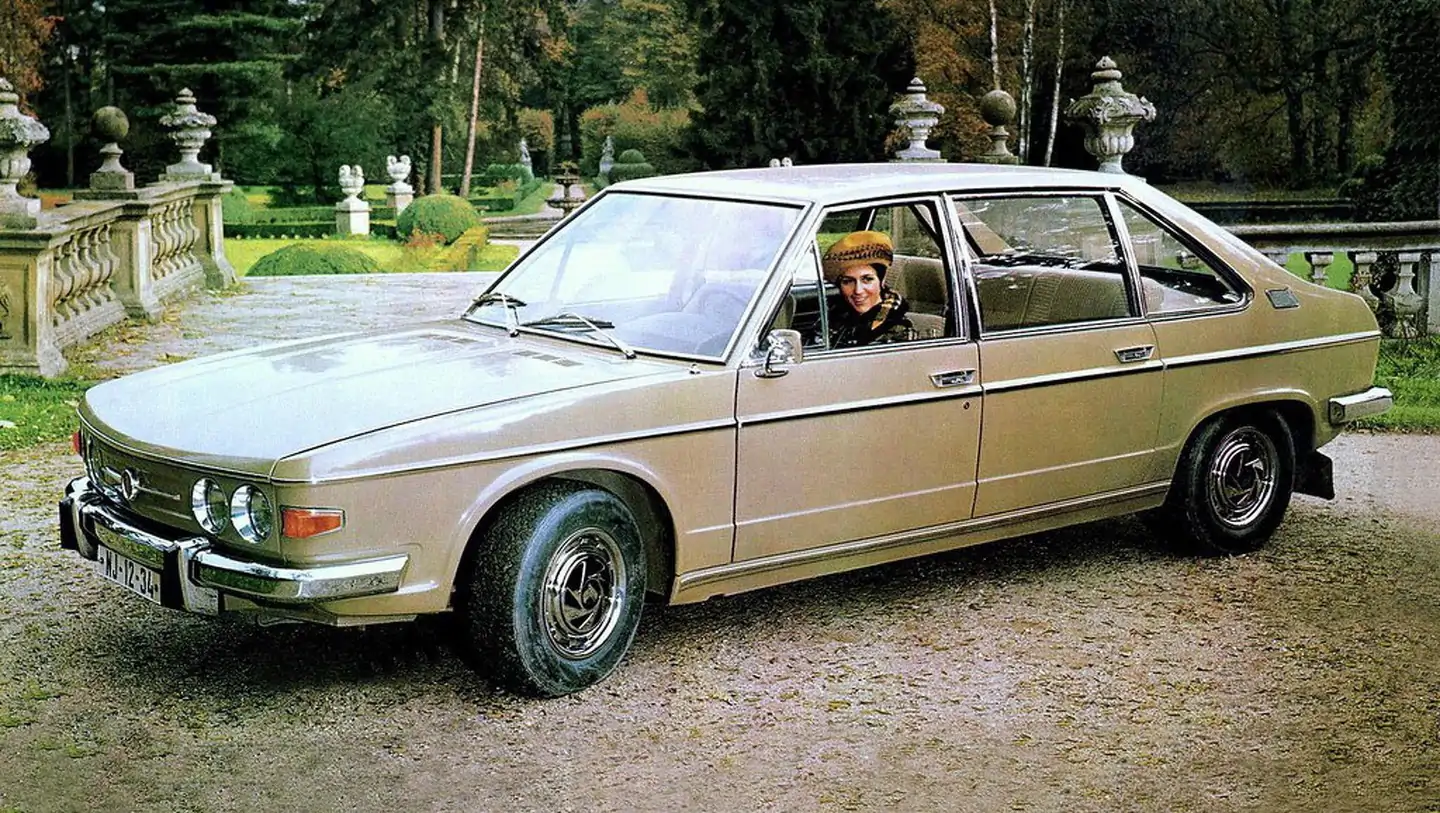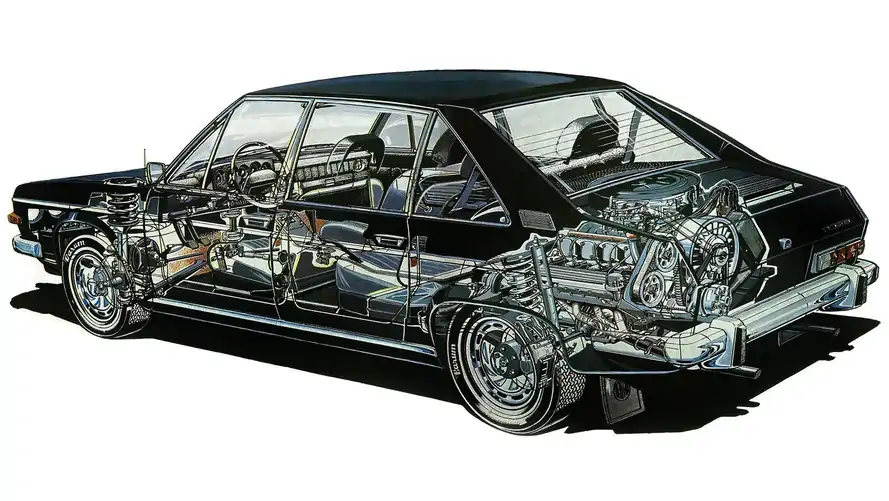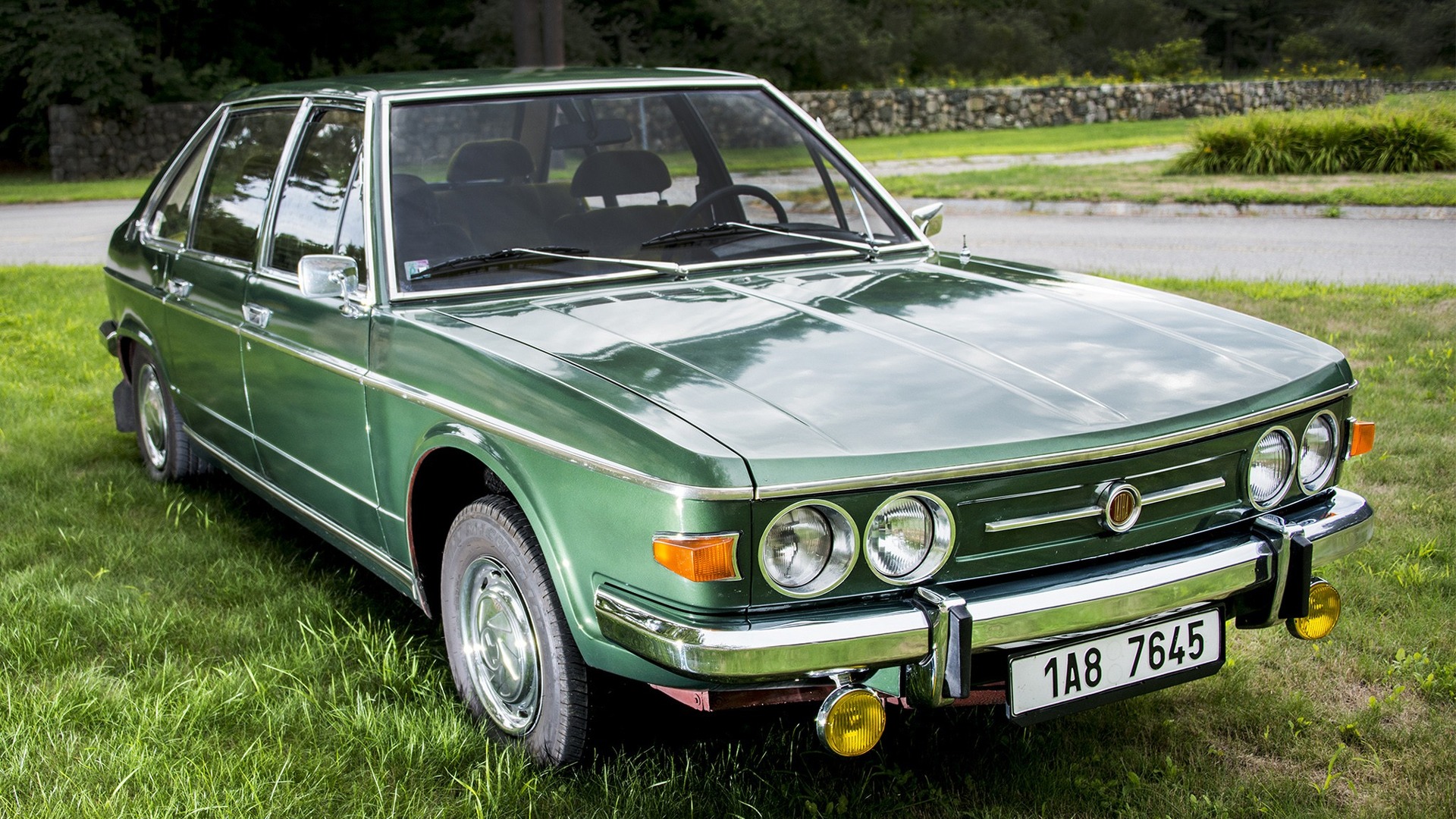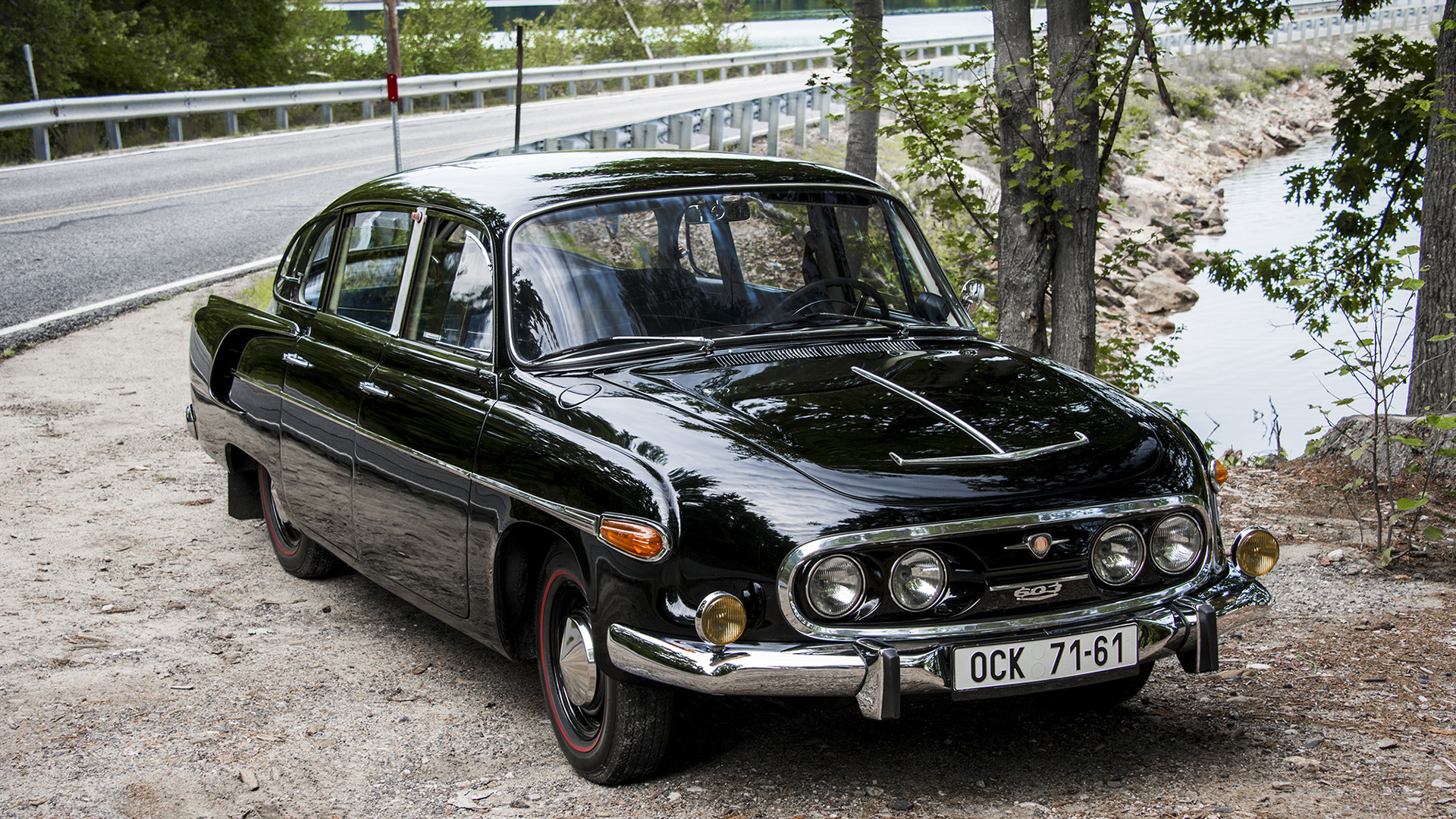
We met the Tatra 603 in May and now it is time to recall its successor, Tatra 613.
This large luxury sedan is made by Tatra , a Czechoslovak company. It had a relatively minor success on the market, but is still regarded as one of the most technologically-advanced vehicles from the Soviet Bloc The production began in 1974. The last model was rolled off the Koprivnice assembly line in 1996, 20 years after it was launched.
The 613 was powered by a 3.5-liter V8 naturally aspirated, air-cooled DOHC petrol engine. It delivered 165 horsepower (123kilowatts), to the rear wheels via a four-speed manual transmission with a floor-mounted gear shift lever. Many refer to the motor’s longitudinal mounting as having four cylinders in front of the rear axle line and four behind it. This layout is known as semi-mid-engine.
A dual-circuit, servo assisted braking system provides stopping power with ventilated disc brakes at all four wheels. McPherson semi-trailing arms and front suspension were used.
 Let’s talk about design. The well-designed luxury sedan was designed by Vignale , an Italian coachbuilder. This name was revived by Ford of Europe in 2013 to be used for the Ford Vignale series. In 1968, the 613 was designed by the Italians. The final product was completed a few years later.
Let’s talk about design. The well-designed luxury sedan was designed by Vignale , an Italian coachbuilder. This name was revived by Ford of Europe in 2013 to be used for the Ford Vignale series. In 1968, the 613 was designed by the Italians. The final product was completed a few years later.
It had double headlights at first. This layout was similar to the later 603 model. Although the overall design of both large cars is the same, the 613 has a more modern and edgy look with a longer hood and shorter overhangs.


It was later exported to the United Kingdom, as a competitor for some BMWs or Jaguars. It was not a huge success despite its numerous upgrades, such as a five-speed gearbox, electronic fuel injection, and a maximum output power of 200 horsepower (149 kW). This is mainly due to its high price, which was around PS30,000 ($37,000 at current exchange rate). It was featured in Top Gear’s 1993 episode (see second video below).
It is something to behold when such an exotic and technologically advanced vehicle is offered, especially in the mid- and late 1990s when modern automotive trends like downsizing and unification began their march.